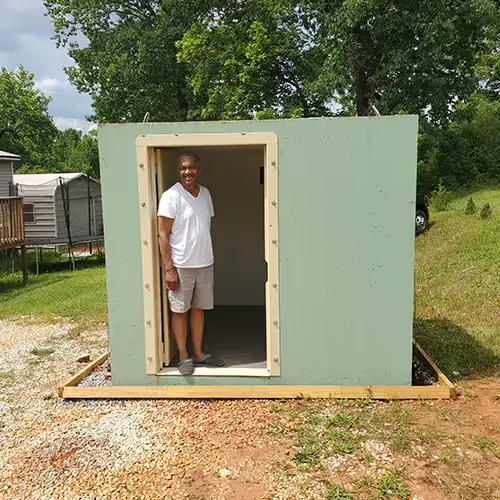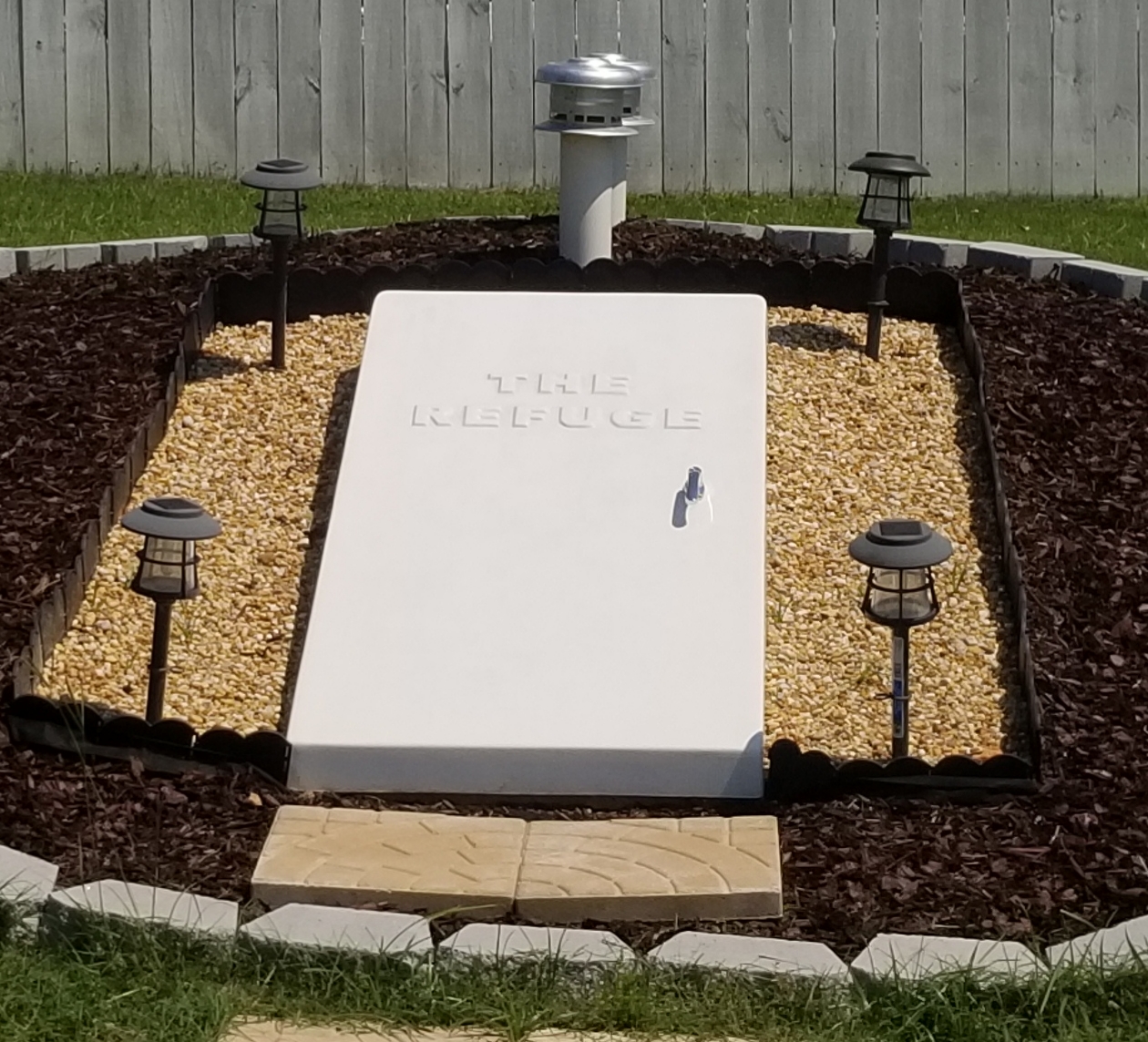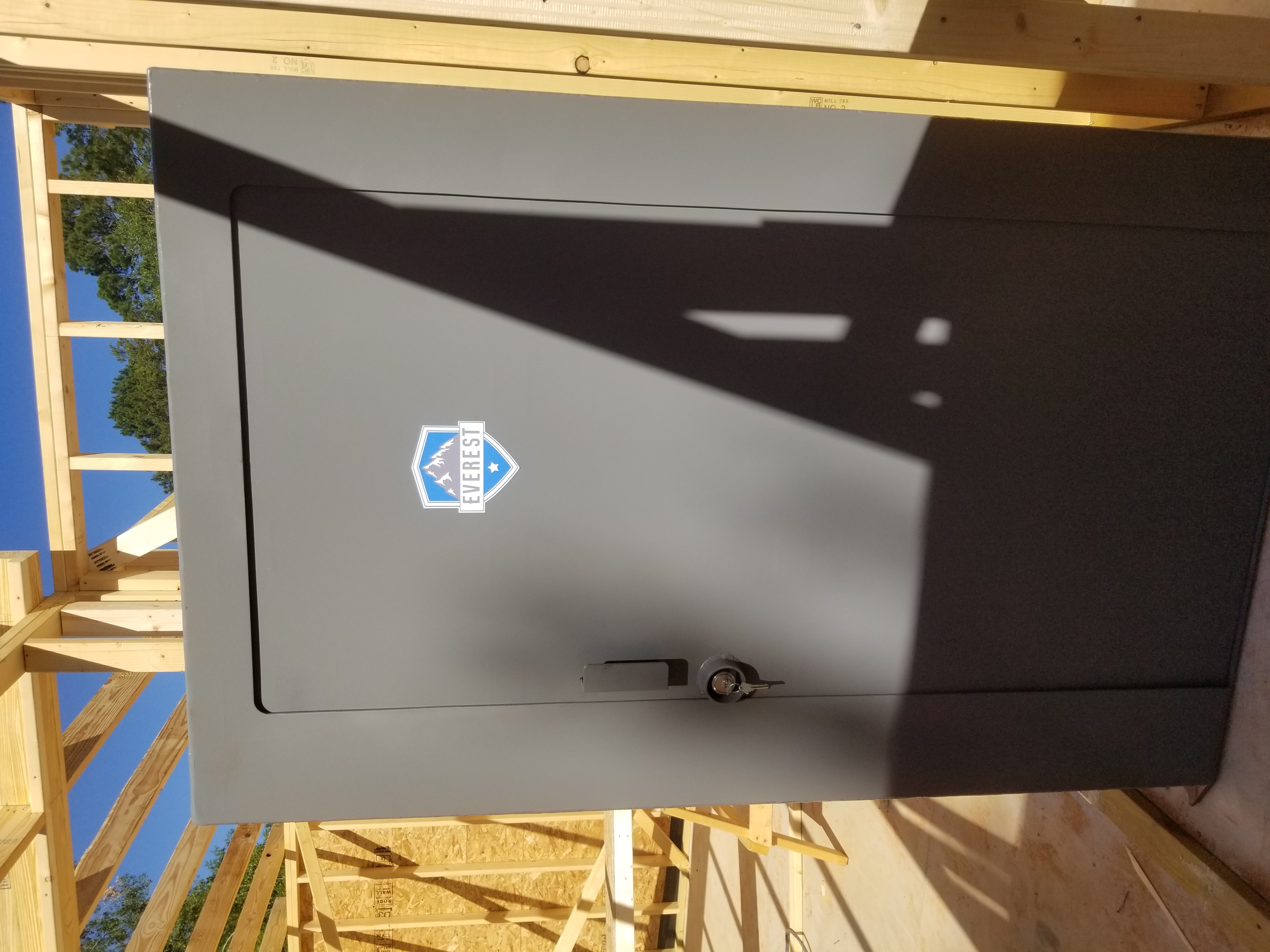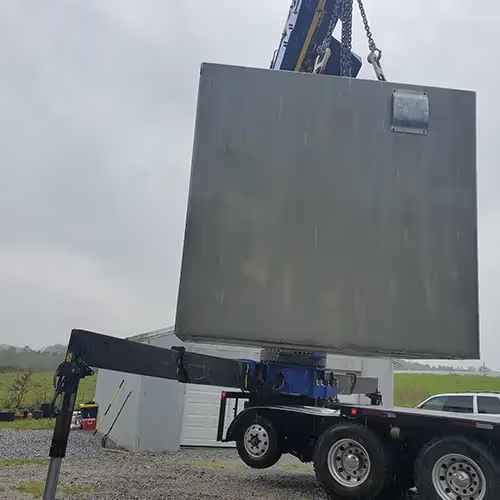Above Ground vs Underground Tornado Shelters: Pros and Cons Explained


When severe weather threatens, every second counts, and you need to know that your tornado shelter will keep your family safe. Choosing between an above ground storm shelter and an underground storm shelter can feel overwhelming, but understanding the distinctions can make the decision much easier. While underground shelters are the traditional choice, trusted for decades, above ground options are gaining popularity due to their accessibility, convenience, and modern engineering. This tornado shelter comparison explores key factors such as tornado shelter safety features, storm shelter cost analysis, and storm shelter maintenance tips, allowing homeowners to make informed decisions.
Above ground shelters offer faster entry and are ideal for families with mobility challenges, pets, or elderly relatives, whereas underground shelters often provide the natural insulation of the earth and a long-standing track record of protection. Both options meet FEMA standards and can withstand winds exceeding 250 mph, but factors like installation complexity, budget, flood risks, and aesthetic considerations now play a more prominent role in decision-making.
Understanding the safe room pros and cons, as well as modern home tornado protection options, is critical when planning your emergency preparedness strategy. By exploring the advantages, disadvantages, and practical considerations of each shelter type, this guide will give you a clear roadmap to choose a safe, durable, and cost-effective solution for your home. By the end, you’ll feel confident in selecting a shelter that suits your family’s needs and property layout.
Understanding the Basics of Tornado Shelters
Tornado shelters have evolved significantly over the years. Historically, families in regions like “Tornado Alley” relied on basement tornado shelters, which were simple reinforced rooms built underground to withstand high winds and flying debris. While these shelters have a proven track record of safety, modern advancements in engineering and construction materials have introduced alternatives such as prefabricated tornado shelters and DIY tornado safe rooms, which offer flexibility in design, placement, and accessibility. Understanding the tornado bunker advantages of each type is essential when planning for family safety.
Above ground shelters rely on above ground shelter materials like reinforced steel and concrete to provide strength comparable to traditional underground shelters. They are easier to access, often require less excavation, and reduce risks associated with flooding, making them ideal in areas with high water tables. Underground shelters remain popular due to their natural insulation, stability, and ability to withstand extreme conditions with minimal maintenance. Both types are designed with tornado-resistant construction principles and comply with FEMA and ICC standards, ensuring they provide reliable protection during severe weather events.
Considering tornado shelter accessibility is crucial, particularly for households with children, elderly members, or individuals with disabilities. Additional features such as ventilation systems, weight capacity, and integration into existing home layouts further influence decision-making. This foundational knowledge sets the stage for a detailed above vs below ground shelters comparison, highlighting the unique benefits and limitations of each type so homeowners can make informed, confident choices.
The Key Differences Between Above Ground and Underground Tornado Shelters
When deciding between above ground storm shelters and underground storm shelters, it’s important to evaluate several factors that go beyond location. First, location and structure play a critical role. Underground shelters are built below grade and utilize the earth as natural protection, while above ground shelters are engineered with heavy-duty steel or concrete, offering a comparable level of safety at ground level. This difference impacts tornado shelter durability, installation complexity, and maintenance requirements.
Accessibility is another crucial factor. Above ground storm shelters allow faster entry, ideal for families with children, pets, or elderly members. Underground shelters may require stairs or ladders, which can slow access during emergencies. Flood and water risks differ significantly; underground shelters are prone to flooding in areas with high water tables, while above ground units eliminate this risk entirely, highlighting both above ground shelter risks and underground shelter risks.
Cost considerations include both purchase price and storm shelter installation cost. Underground models often require excavation and drainage, increasing labor and material expenses, whereas above ground shelters can be installed more quickly. Aesthetic and space considerations also differ; above ground shelters can blend with home or landscape design, while underground shelters preserve yard space but may require more maintenance. Understanding these differences ensures that homeowners make a choice based on personal needs, property layout, and long-term considerations, balancing storm shelter maintenance tips and safety priorities.
The Advantages of Above Ground Tornado Shelters
Above ground tornado shelters are gaining popularity because they combine modern safety standards with practical benefits. These shelters are constructed using reinforced concrete or steel and meet FEMA and ICC wind and debris regulations. Their key advantages extend beyond structural integrity, impacting accessibility, convenience, and long-term usability.
Enhanced Accessibility – Ground-level entry allows children, seniors, and individuals with mobility challenges to enter safely and quickly during emergencies.
No Flooding Concerns – Above ground units eliminate risks associated with underground flooding, particularly in areas with high water tables or frequent rainfall.
Faster Installation – Many above ground shelters can be installed in days, rather than weeks, reducing disruption to your property.
Versatile Placement Options – They can be installed in garages, backyards, or attached to homes, offering flexibility for a variety of property types.
Low Maintenance – Without direct soil pressure or constant moisture exposure, these shelters require less upkeep over time.
Proven Structural Integrity – Modern designs have been rigorously tested, ensuring they provide equivalent protection to underground shelters.
These benefits translate into peace of mind and reliable residential tornado protection. Families can take cover quickly while reducing potential hazards associated with flooding or debris. Furthermore, an above ground shelter offers the flexibility to integrate ventilation, interior design, and emergency storage solutions, enhancing both comfort and preparedness for severe storms. For more details on materials and options, see steel above ground tornado shelters and concrete above ground tornado shelters.
Challenges of Above Ground Tornado Shelters
While above ground shelters provide many benefits, they also come with certain challenges that homeowners must consider. Perceived Safety Concerns remain for some, as traditional underground shelters are widely viewed as inherently safer despite FEMA-approved testing confirming the protection levels of properly built above ground models.
Higher Initial Cost – Depending on materials and customization, the upfront expense may be higher than basic underground units.
Space Requirements – These shelters need a flat, stable surface, usually in a garage, backyard, or adjacent to the home. Limited space may restrict options for placement.
Aesthetic Considerations – Being above ground makes shelters more visible, which can impact landscaping or property appearance.
Anchoring and Wind Resistance – Proper installation and anchoring are essential to prevent movement or uplift during extreme wind events.
Many of these challenges can be mitigated through careful planning. Work with certified installers familiar with FEMA and ICC standards, guided by the Choosing the Right Tornado Shelter Installer article, select an optimal safe room location, and consider storm shelter financing options to manage initial costs. Understanding these limitations ensures homeowners make informed decisions and maintain confidence in the durability, safety, and long-term performance of their shelter.
How to Choose and Install the Right Tornado Shelter for Your Home
Choosing and installing the right shelter involves careful planning and consideration of your property, family needs, and budget.
- Assess Your Property – Determine whether space is better suited for an above ground or underground shelter. Evaluate soil type, drainage, and accessibility.
- Set Your Budget – Factor in the shelter cost, storm shelter installation cost, and any site preparation work.
- Check FEMA and ICC Compliance – Verify that your shelter meets all standards.
- Choose a Trusted Manufacturer and Installer – Work with certified professionals offering prefab vs custom shelters.
- Plan the Location and Access – Ensure rapid entry, guided by a safe room location guide, ideally near home entrances or high-traffic areas.
- Schedule Installation and Inspection – Confirm proper construction, anchoring, and ventilation solutions.
Additional resources include FEMA’s emergency storm shelter guide, the National Storm Shelter Association, and local emergency management offices. Incorporate a storm shelter emergency kit and follow a tornado preparedness checklist to maximize safety. Consider shelter durability, accessibility, and integration with home layout to ensure a fully effective solution for home tornado protection options. For a practical DIY tornado safe room guide, readers can review step-by-step instructions.
The Future of Tornado Shelters and Severe Weather Preparedness
Advancements in tornado shelter design continue to improve safety, accessibility, and efficiency. Smart Shelter Technology now integrates with mobile apps and emergency alert systems to provide real-time updates. Modular and Portable Designs expand access to renters and mobile homes. Sustainable Construction Materials provide durability while reducing environmental impact.
Community Shelter Initiatives are growing, with neighborhood shelters providing shared protection, and Enhanced Accessibility Features ensure everyone, including older adults and people with disabilities, can reach safety quickly. These developments influence tornado safety rating comparison, safe room space requirements, tornado shelter lifespan, and tornado shelter reviews, shaping a safer future for families and communities alike.
Building a Safer Tomorrow, Your Next Steps
Concrete and steel shelters provide long-term reliability, combining concrete storm shelter benefits with practical safety features. A steel tornado safe room or reinforced above ground shelter ensures durability, accessibility, and peace of mind. Effective planning can also support tornado escape strategies, emergency kits, and insurance compliance through safe room insurance requirements.
Investing in proper installation, thoughtful placement, and certified designs provides lasting safety for your family. By integrating these measures, you’re not just protecting a home—you’re building a safer, more resilient environment. Prioritize planning, act proactively, and ensure your family is prepared for severe storms now and in the years to come.




